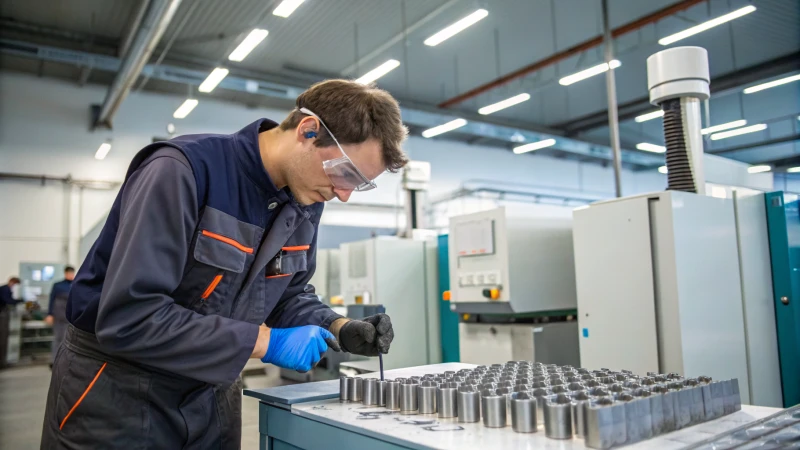Handling cemented carbide is really tricky. People must use great care to avoid accidents. The material is tough and requires precise control. Mistakes might lead to significant harm. Proper handling is crucial.
I always wear protective gloves and safety glasses when handling cemented carbide. Proper ventilation keeps dust under control. Avoid long contact with cobalt dust on the skin. These actions protect me from injuries. Safety really matters.
When I first started with cemented carbide, I felt overwhelmed by all the precautions. But learning about the risks helped me see why safety measures matter. Understanding the dangers of dust and cobalt exposure has taught me to protect myself better. Let's explore these rules more and see how they guard us at work.
Cemented carbide requires protective gear when handled.True
Wearing protective gear reduces exposure to hazardous materials.
Prolonged skin contact with cobalt dust is safe.False
Prolonged contact can lead to skin irritation and health issues.
Why Is Cemented Carbide Considered Hazardous?
Have you ever wondered why such a strong material like cemented carbide might be dangerous? It really depends on what is inside its hard shell. I discovered how to handle it in a safe manner.
Cemented carbide contains cobalt, which is considered hazardous. Cobalt might cause cancer. Machining creates dust that causes breathing problems. Skin irritation is another issue from the dust. It probably poses fire risks. Proper ventilation is very important for safety. Workers should wear protective gear while handling it.
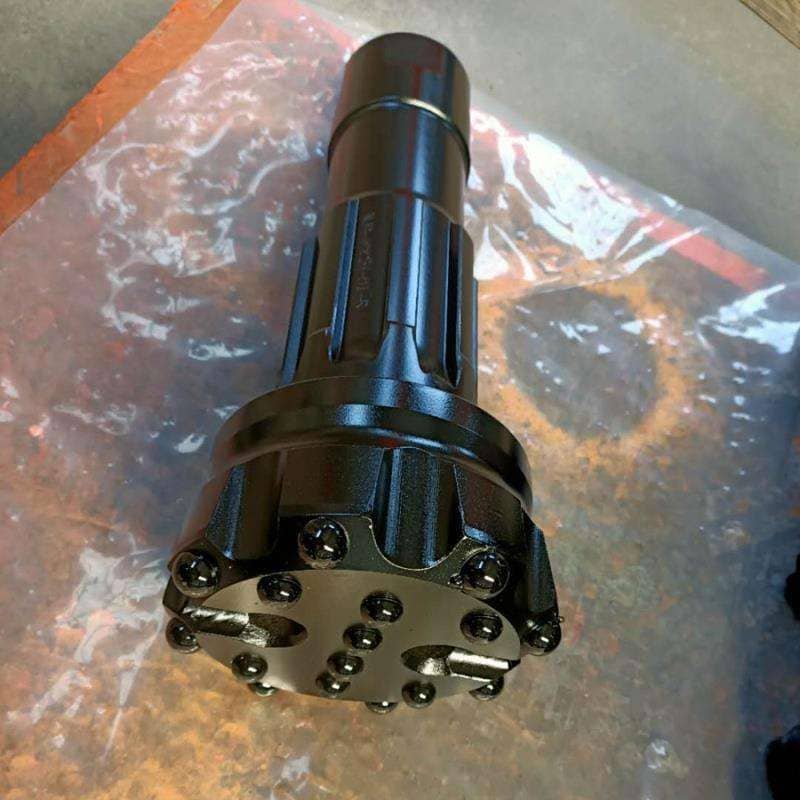
Understanding the Composition of Cemented Carbide
I remember the first time I held cemented carbide. It was in a busy workshop with machines making noise constantly. The material felt very strong, like a small piece of a tank in my hand. Its strength comes from its composition. It consists of tungsten carbide particles held together with cobalt. This special mixture makes it really hard and tough, perfect for cutting tools. However, cobalt, while useful, comes with health risks if not handled well.
Health Risks: Respiratory and Skin Concerns
In my early days with cemented carbide, I didn’t know about the tiny dust particles that float in the air during machining or grinding. These particles may enter your lungs and cause breathing issues because they contain cobalt. Cobalt might cause cancer. I quickly realized the importance of using dust extraction systems1 and wearing respirators for protection.
Dust Management:
| Measure | Description |
|---|---|
| Dust Extraction | Captures dust at the source during processing. |
| Respiratory Protection | Use masks to prevent inhalation of fine dust. |
Dust can also cause skin problems. Contact might lead to issues like sensitization and dermatitis. I began wearing gloves and washing my skin often to avoid these skin problems.
Fire and Explosion Hazards
Cemented carbide itself does not burn, but the fine powders it creates are different. These powders might catch fire, leading to fire and explosion dangers. I learned to always keep open flames away from work areas and use explosion control measures2. Using dust collection systems greatly reduced airborne dust and also lowered fire risks a lot.
Safety Measures and Best Practices
Handling Precautions:
- Personal protective equipment (PPE) like gloves and safety glasses became really important to me.
- Proper workspace ventilation is crucial to stop dangerous dust from building up.
Training and Information:
- Comprehensive training on proper techniques greatly helped me and my colleagues.
- Access to safety data sheets (SDS) for all materials helped us understand potential health risks.
Following these steps is essential to reducing hazards related to cemented carbide in our industry. Staying informed probably helps create a safer working environment. For more insights on safety, I often check resources on industrial safety standards3.
Cemented carbide dust is harmless to skin.False
Cemented carbide dust can cause skin sensitization and dermatitis.
Cobalt in cemented carbide is a potential carcinogen.True
Cobalt is classified as a potential carcinogen, posing health risks.
What Personal Protective Equipment (PPE) Is Essential for Safe Handling?
Understanding workplace safety may seem overwhelming. It's probably important to know the basics of Personal Protective Equipment (PPE). This knowledge provides a good starting point.
Essential Personal Protective Equipment (PPE) for safe handling includes gloves, safety glasses, respirators and protective clothing. These items protect against physical injuries and chemical exposure. They also guard against respiratory hazards. They help create a safer working environment.
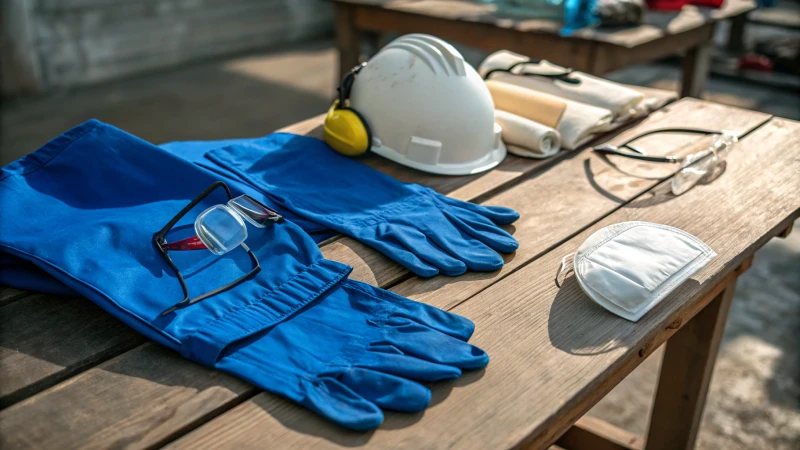
Understanding the Basics of PPE
In my first days at a job with strict safety rules, I felt very confused by all the gear I had to wear. Later, I understood the purpose of each piece of Personal Protective Equipment (PPE). These items are our frontline defense. They protect us from potential dangers.
| PPE Item | Purpose |
|---|---|
| Gloves | Protects hands from unexpected spills and abrasions |
| Safety Glasses | Shields eyes from debris |
| Respirators | Prevents inhalation of harmful dust or fumes |
| Protective Clothing | Guards against chemical spills and fire hazards |
Each piece really plays a critical role.
The Role of Gloves in Protection
Gloves feel like personal superheroes for protection. Different tasks require different gloves. Nitrile gloves resist chemicals well, while leather gloves handle tougher jobs better. Having the right gloves for each task is really important. For example, nitrile gloves provide chemical resistance4.
Eye Protection: Safety Glasses and Goggles
Never underestimate the importance of eye protection. In risky environments, safety glasses are very necessary. When risks increase, I add goggles or face shields for more security. Safety for the eyes remains vital. Goggles offer more comprehensive protection by sealing around the eyes, and in high-risk areas, consider using face shields5 in conjunction with safety glasses.
Respiratory Protection: Why It's Necessary
Breathing easily is not always possible due to harmful dust or fumes around us. That's why respirators are necessary. Disposable masks or full-face respirators keep dust and fumes away. Compliance with safety standards6 is crucial.
Choosing Protective Clothing
Choosing protective clothing is like preparing for battle; many options exist. Flame-resistant materials suit fire-prone areas, while chemical-resistant suits protect against chemicals. Conducting a thorough risk assessment7 is probably essential first.
Understanding PPE requirements can save lives. Regular training sessions and equipment checks have become second nature; they help maintain safety focus in any environment.
Gloves protect against chemical and physical hazards.True
Gloves shield hands from cuts, abrasions, and chemicals.
Safety glasses are unnecessary for chemical splash protection.False
Safety glasses shield eyes from debris and chemical splashes.
How Can You Effectively Manage Cemented Carbide Dust?
Ever looked around your workspace and noticed it's not just dust, but a danger to health? Handling cemented carbide dust is very important for safety. Everyone needs to stay safe.
Local exhaust ventilation helps control cemented carbide dust. Workers should wear personal protective equipment. Regular maintenance of dust extraction systems is necessary. All employees need thorough training on safety rules. Employees must really understand these safety protocols.
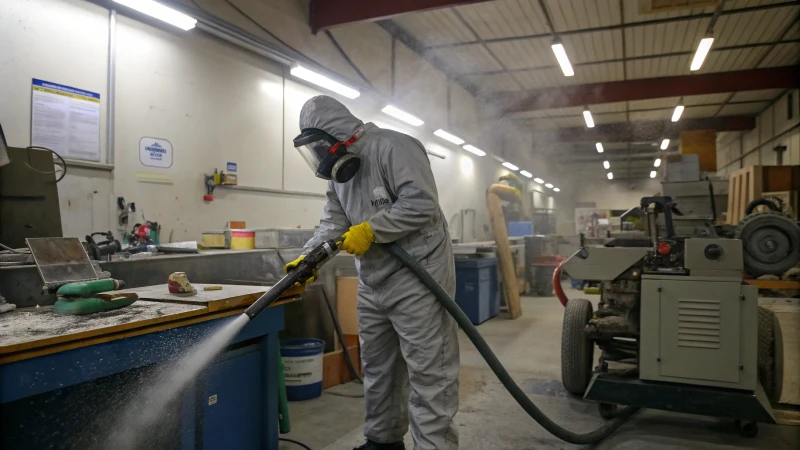
Understanding the Hazards
I remember my first experience learning about the dangers of cemented carbide dust. It was a real eye-opener. I used to think dust was just an annoying byproduct of work, but then I learned how harmful it actually is, especially when it contains tungsten carbide and cobalt. Inhaling this dust leads to serious respiratory issues and skin irritation. This stuff is very dangerous; it's not just a nuisance.
Understanding these hazards is similar to realizing that leaving milk out overnight poses a health hazard. Probably, understanding these hazards is the first step to managing the problem better.
Ventilation Systems
Local exhaust ventilation (LEV) systems work like your workspace's lungs. They capture dust at its source, helping everyone breathe easier—like opening a window in a stuffy room, but much more effective. Regular checks and maintenance are essential for these systems. I've seen neglected systems, and you definitely don't want that.
Explore best practices in LEV installation and maintenance8.
Personal Protective Equipment (PPE)
Wearing proper PPE feels like putting on armor for battle. Respirators and protective clothing might not feel comfortable, but they're very essential. Training everyone on the correct use of these items is really worth it.
Learn more about choosing the right PPE for industrial environments9.
Regular Equipment Maintenance
It's easy to overlook maintenance until a breakdown happens—like waiting for your car to break down before servicing it. Keeping machinery checked results in less dust and fewer problems later.
Access guidelines on effective machine maintenance strategies10.
| Safety Measure | Description |
|---|---|
| Ventilation | Use LEV systems for dust control |
| PPE | Wear masks and protective clothing |
| Maintenance | Regular equipment checks |
Comprehensive Training
Comprehensive training gives people confidence to act when things go wrong. It provides the necessary knowledge to handle materials safely, including knowing emergency procedures and handling techniques.
Discover more about designing effective training programs11.
By understanding and applying these strategies, the risks linked with cemented carbide dust can be reduced, resulting in a safer and healthier work environment for everyone.
Cemented carbide dust is harmless when inhaled.False
Cemented carbide dust contains tungsten carbide and cobalt, harmful when inhaled.
LEV systems are essential for dust control at the source.True
Local exhaust ventilation captures dust at its source, reducing exposure.
What Health Risks Does Cobalt in Cemented Carbide Pose?
Picture yourself in a place filled with unseen dangers that float around with every breath you inhale.
Cobalt in cemented carbide causes breathing problems. Cobalt irritates the skin. It possibly raises cancer risk. Do not worry. Use correct safety gear. Follow the rules. This practice lowers health dangers greatly.
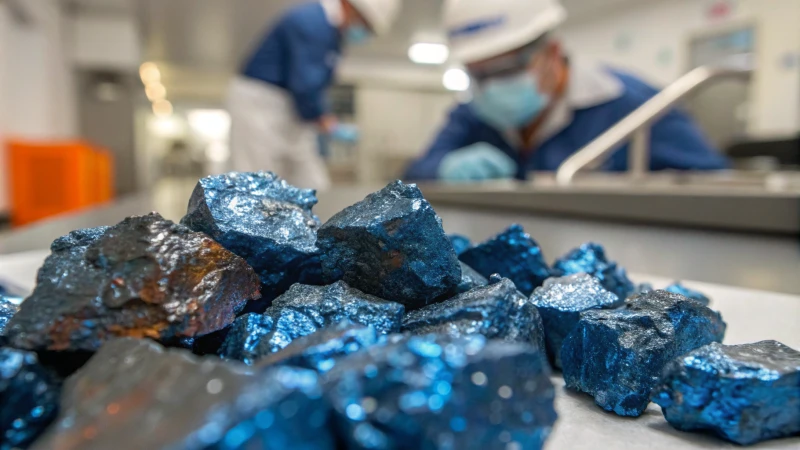
Health Risks of Cobalt Exposure
Learning about cobalt dust dangers felt like finding a secret threat in my everyday tasks. This material strengthens tools, but it poses silent risks too. Breathing cobalt dust can damage your lungs, similar to how an unexpected cold sneaks up on you.
Respiratory Concerns
The air at work sometimes becomes harmful. Over time, inhaling this dust harms your lungs, causing asthma-like problems or even worse lung diseases. A colleague's constant cough served as a stark reminder for all of us.
| Symptoms | Description |
|---|---|
| Coughing | Persistent dry cough due to airway irritation |
| Shortness of Breath | Difficulty breathing, especially during exertion |
| Wheezing | High-pitched whistling sound when breathing |
Workplaces need dust control systems like local exhaust ventilation12. It's more than a suggestion; it's vital.
Skin and Eye Contact Risks
Touching cobalt-covered surfaces made my skin feel itchy and irritated. Long exposure can be very uncomfortable or even painful. Protective gear, like gloves and frequent handwashing are crucial. Don't forget eye protection; a single dust particle might ruin your day.
- Protective Measures: Gloves and protective clothing are key. Wash often.
- Eye Protection: Wear safety goggles to guard against annoying particles.
Potential Carcinogenic Effects
Cobalt might cause cancer and that thought is scary. Safety protocols help protect long-term health. Keeping exposure low through regular checks is very important.
Refer to regulatory guidelines13 for complete safety standards.
Reducing Health Risks
Having rules is not enough. We must use them daily. Employers must provide proper gear and training. This training changes safety documents from confusing to lifesaving.
Safety Training Components
- Understand material safety data sheets (MSDS)
- Learn emergency response steps
- Use PPE correctly
Routine health checks spot issues early. They keep our workplace productive and safe from hidden dangers of cobalt in cemented carbide14.
Cobalt in cemented carbide can cause respiratory problems.True
Inhalation of cobalt dust is a lung irritant and potential carcinogen.
Wearing gloves prevents all cobalt exposure risks.False
Gloves protect skin but don't prevent inhalation or eye exposure risks.
How Can You Prevent Fire and Explosion Hazards When Working with Cemented Carbide?
At first, the safety risks of working with cemented carbide were overwhelming. Over time, I discovered very important steps to keep myself and my colleagues safe.
Preventing fire and explosion hazards when working with cemented carbide is crucial. I focus on efficiently managing dust. Protective gear offers really good protection. Excellent ventilation reduces risks. Regular training on safe handling is vital. Emergency protocols are also essential.
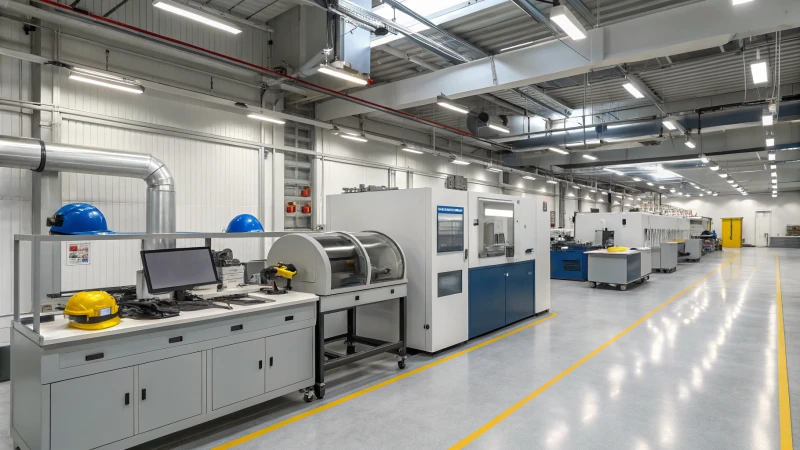
Understanding the Risks
I remember walking into a workshop full of activity. The air was thick with cemented carbide dust, which has potential dangers. Its strength is useful, but fine dust from machining processes15 might be harmful if not properly managed.
Essential Safety Measures
1. Dust Management
I learned early on that dust control is crucial. Local exhaust ventilation systems became essential for me. These systems capture dust at its source. It is very important to check these systems regularly to keep them working smoothly.
| Safety Measure | Action Items |
|---|---|
| Dust Extraction | Install LEV systems and maintain them regularly |
| Protective Gear | Use respirators and protective clothing |
2. Fire Prevention Strategies
Cemented carbide itself does not catch fire, but the dust could. I remove open flames and ignition sources in work areas.
- Use of Flameproof Equipment: Ensure all equipment used in these areas is flameproof.
- Regular Cleaning: Keeping the area clean really helps lower fire risks.
Training and Emergency Protocols
Safety training is essential at work. Everyone, including me, learns how to handle cemented carbide safely. This includes health risks and emergency actions.
- Training Programs: Regular sessions focus on safety rules.
- Emergency Drills: Drills keep us ready for any incidents.
Chemical Hazard Awareness
Cobalt in cemented carbide is another risk factor. I pay attention to hygiene to avoid exposure.
- Hygiene Practices: I always wash thoroughly after handling these materials.
- Personal Protective Equipment (PPE): Gloves and masks are essential during operations.
By making these practices routine and promoting a safety culture, I have seen fire and explosion risks reduce significantly in environments where powerful materials like tungsten carbide16 are handled responsibly. Staying informed and watchful is key to everyone's safety.
Cemented carbide dust is flammable.True
While cemented carbide isn't flammable, its dust can ignite easily.
Regular cleaning reduces fire risks with carbide dust.True
Cleaning prevents dust accumulation, minimizing fire hazards.
What Training Should Be Provided to Workers Handling Cemented Carbide?
Handling cemented carbide safely involves more than just technique. Safety protects the people we care about in the workplace. This material presents unique risks. These risks require attention to detail. Commitment to worker safety is very important.
Workers must receive training to handle cemented carbide safely. They need to learn safe handling methods. Proper use of personal protective equipment (PPE) is important. Managing dust is also crucial. Workers must know what to do in emergencies. Such knowledge creates a safer working environment. It addresses the unique hazards of cemented carbide. Safety truly depends on this training.
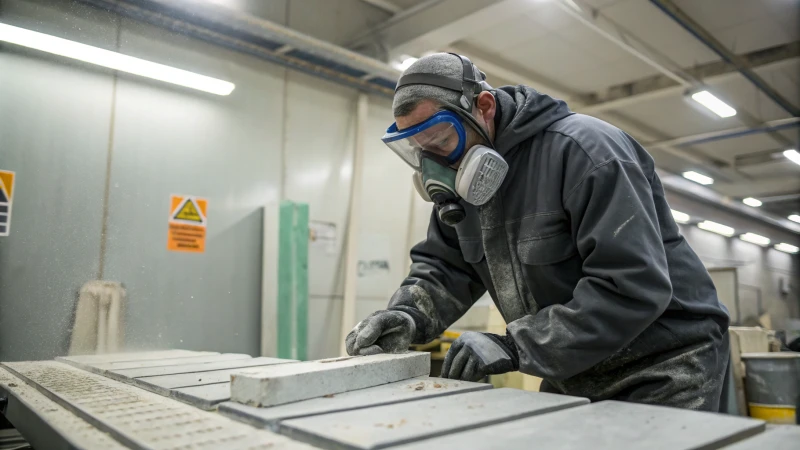
Understanding Cemented Carbide Hazards
When I first saw cemented carbide at work, I was amazed by its strength. Cemented carbide is a mix of tungsten carbide and cobalt. During machining, it releases dust. This dust is not just annoying - it is dangerous for breathing and skin. Training sessions should explain these risks clearly. Recognizing hazards helps in staying safe.
Training should begin with educating workers about the composition of cemented carbide17 and its potential risks.
Proper Use of Personal Protective Equipment (PPE)
On my first day in the workshop, I felt like a sci-fi character with all the PPE gear. I later understood these tools are essential. Gloves, masks, and safety goggles protect us from cuts and dust. PPE training must stress the need for regular use. Protective gear is really crucial.
Instruction on PPE is vital. Workers should learn how to select and use appropriate PPE like gloves, masks, and safety goggles consistently to prevent contact with sharp edges and inhalation of dust.
Dust Management Techniques
I have witnessed the power of good dust management. Local exhaust ventilation systems are indispensable. They really change workspaces for the better. Training should teach maintenance of these systems. It is also important to follow correct cleaning methods. Smaller dust exposure means safer work environments.
| Dust Control Measures | Description |
|---|---|
| Ventilation Systems | Use local exhaust ventilation to capture dust at source. |
| Respiratory Protection | Equip workers with respirators or masks during machining. |
| Regular Maintenance | Ensure equipment is functioning effectively and efficiently. |
Emergency Procedures
Accidents occur at times. I once saw someone get dust in their eyes. It was unpleasant, but knowing what to do made it better. First aid training should include eye rinsing and dealing with dust ingestion.
Workers should be trained on emergency procedures in case of accidental exposure or injury, including first aid measures for eye contact and ingestion of carbide dust.
Access to Safety Data Sheets (SDS)
Safety Data Sheets (SDS) act as safety manuals. Sheets hold key details about materials like tungsten carbide and cobalt.
I always keep them handy as they help in emergencies and risk management.
Training should show how to read and use these sheets effectively.
Ensuring that workers have access to Safety Data Sheets (SDS)18 is crucial for handling emergencies and managing exposure risks.
By implementing these training components, companies can foster a safer working environment where prioritizing safety lowers risks associated with handling cemented carbide materials.
Cemented carbide contains tungsten carbide and cobalt.True
Cemented carbide is a composite material primarily composed of tungsten carbide and cobalt.
Workers don't need PPE when handling cemented carbide.False
PPE is essential to protect against dust inhalation and skin contact with cemented carbide.
Conclusion
Handling cemented carbide requires strict safety measures, including PPE usage, dust management, and awareness of cobalt exposure risks to ensure a safe working environment.
-
Learn about dust extraction systems that protect workers from inhaling harmful particles during machining processes. ↩
-
Explore strategies to minimize explosion risks in environments where fine dust particles are present. ↩
-
Understand the key safety standards that govern the handling of hazardous materials in industrial settings. ↩
-
Explore which gloves provide the best protection against different chemicals, helping you select the right pair for your needs. ↩
-
Learn how face shields can enhance safety by providing additional protection to the face and eyes. ↩
-
Understand the standards that ensure respirators offer adequate protection against specific airborne hazards. ↩
-
Discover steps to conduct an effective risk assessment for selecting appropriate PPE. ↩
-
Learn about effective LEV installation to enhance dust management efficiency. ↩
-
Discover how to select PPE that offers optimal protection against hazardous dust. ↩
-
Explore guidelines on maintaining machinery to minimize dust emission. ↩
-
Gain insights into creating impactful training programs for workplace safety. ↩
-
Learn how local exhaust ventilation systems capture harmful dust at its source, enhancing workplace air quality. ↩
-
Explore the safety standards that govern cobalt use and ensure compliance with health regulations. ↩
-
Discover effective strategies to minimize health risks when working with cobalt. ↩
-
Learn about efficient machining processes that reduce risks associated with cemented carbide dust. ↩
-
Explore tungsten carbide's properties to better understand its applications and potential hazards. ↩
-
Understand the specific health risks associated with cemented carbide exposure for better hazard management. ↩
-
Learn how to interpret safety data sheets for effective handling and emergency response. ↩

